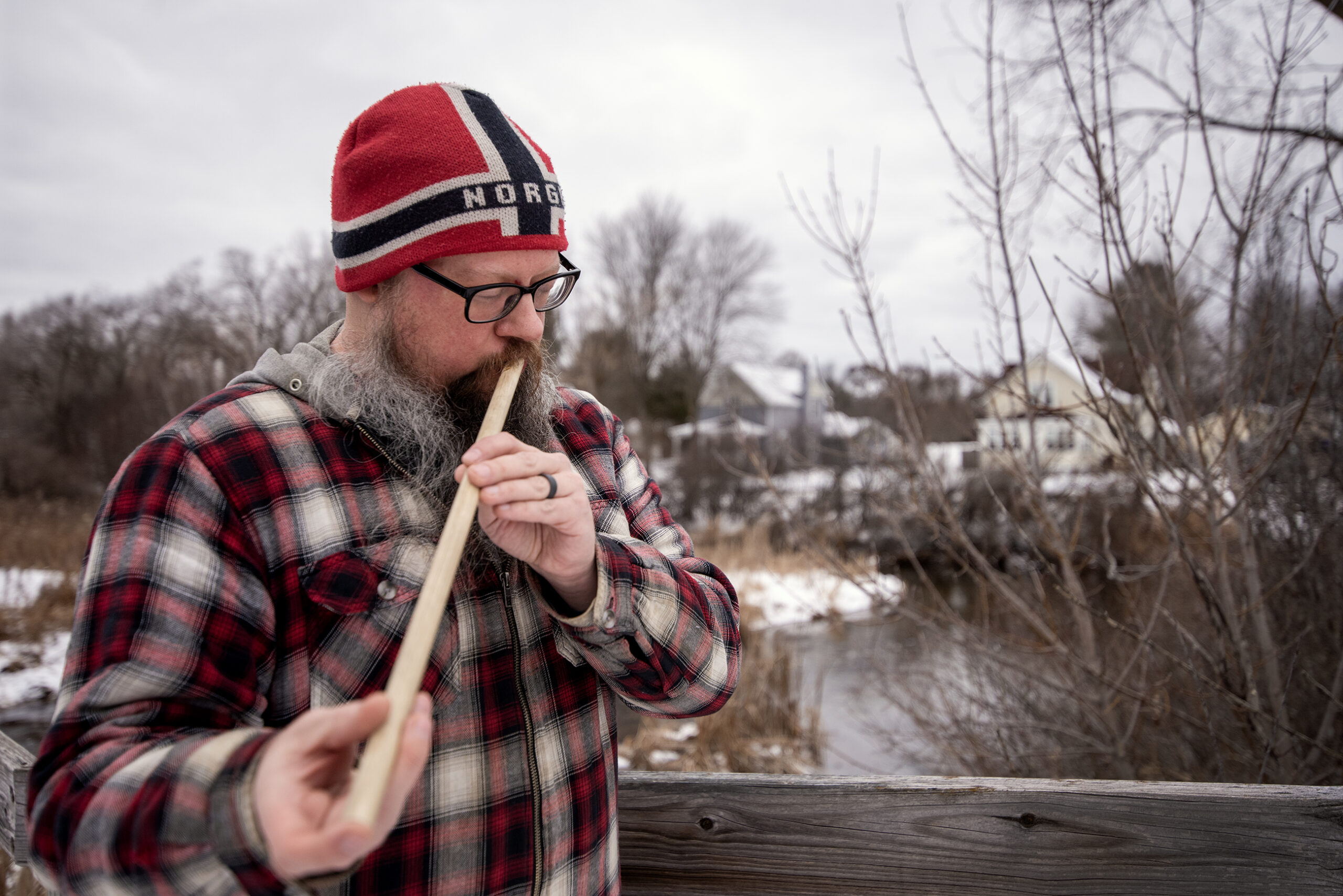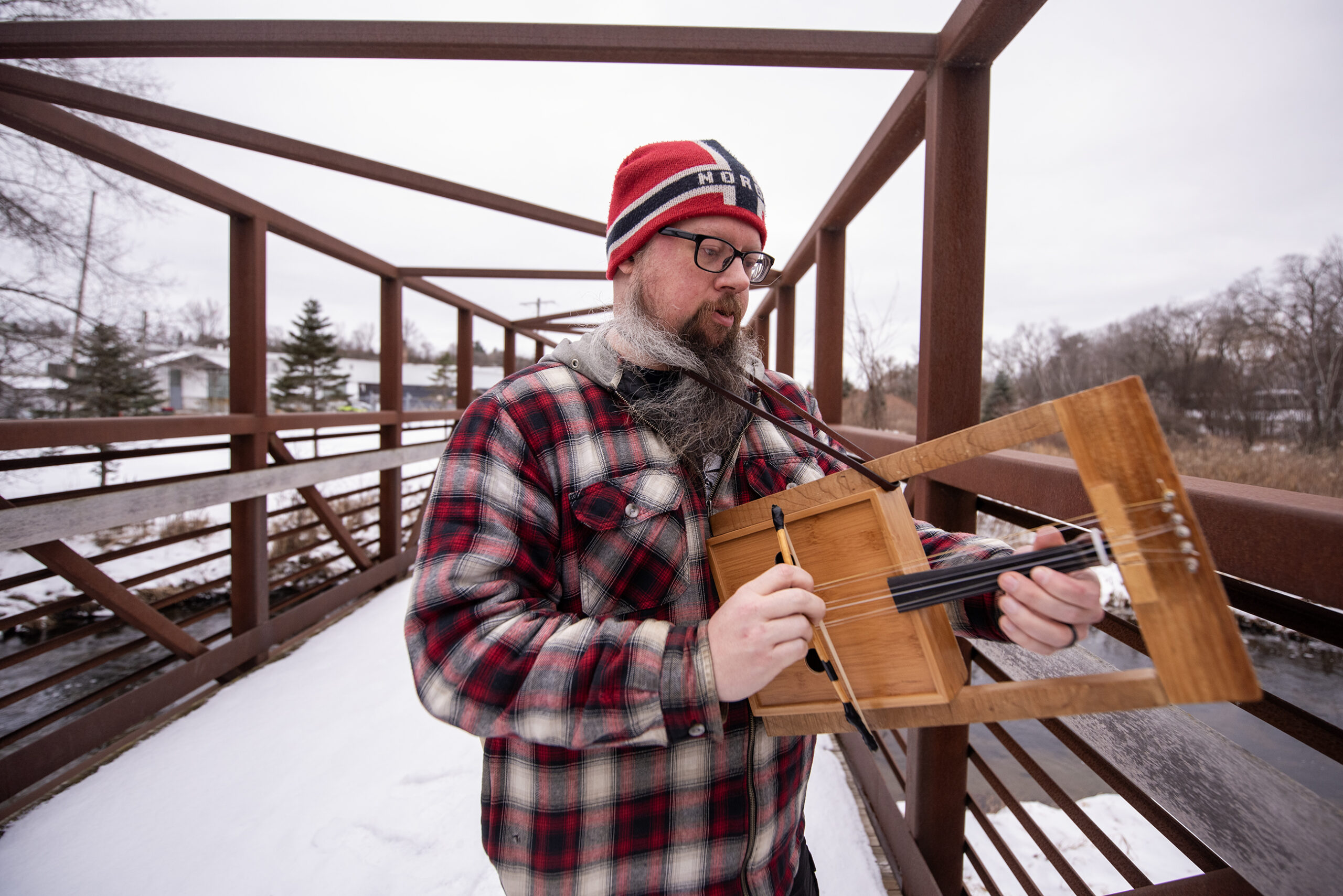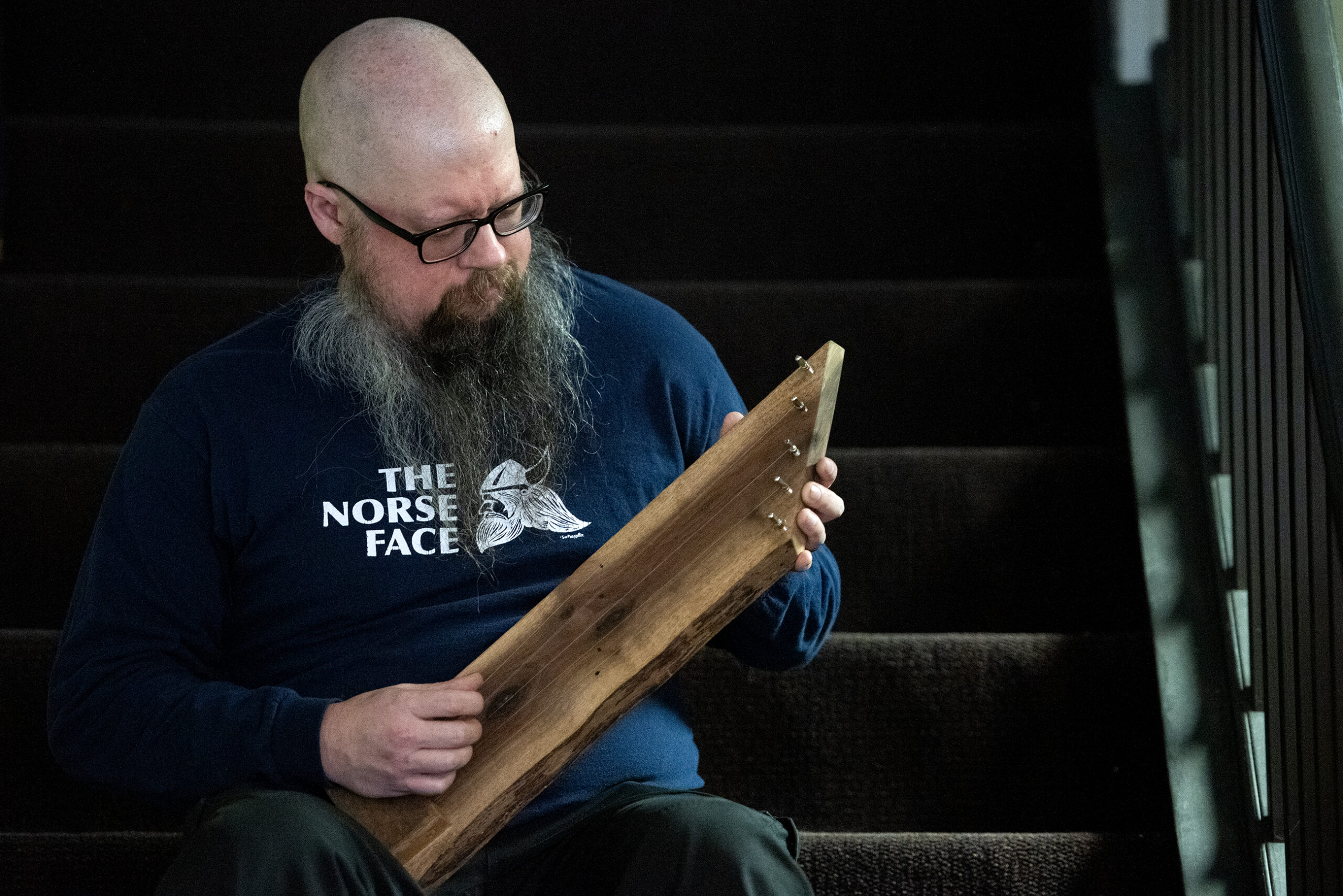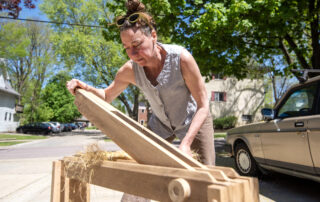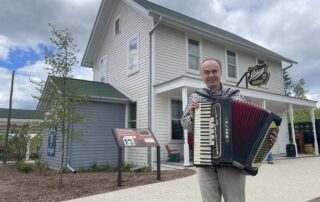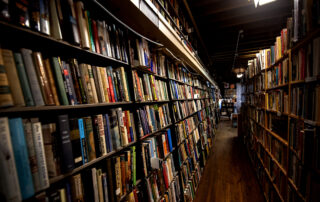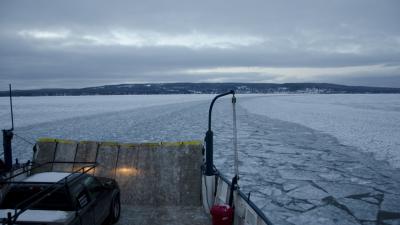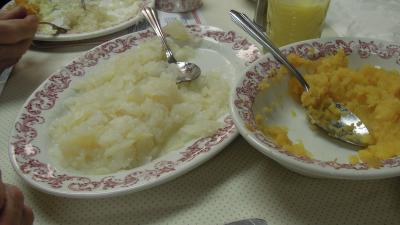Imagine it’s spring and you’re living in a Norwegian village during the Viking age. It was a hard winter, but now it is getting warmer, days are longer, and it’s time for the spring festival.
“Everybody’s getting ready to dance and have a good time,” said Eric Bestul, a musician and music teacher who owns the Lessons from the Art academy in Iola, Wisconsin. “What would be the soundtrack?”
Bestul has spent the last three years studying Viking music. He builds instruments similar to those in the historical record. As Skogtroll, he writes and records music in the style of what those villagers might have heard at that spring festival – even though he admits the process involves some guesswork.
“We don’t know what Viking music actually sounded like,” he said. “There are no songs written down. There’s no direct (way to know), ‘This is how it sounded.’”
The Viking era was more than a thousand years ago, and unlike some cultures of the time, Vikings didn’t keep great records. That means efforts to reproduce the music of northern Europeans circa 900 A.D. are always imperfect. But that’s also part of what makes the project so intriguing for Bestul.
“You have to look at what comes before, what cultures they would have encountered, and then what came after,” he said. “What are the living traditions that exist today? (All these things) are going to all connect into what we think maybe Viking music sounded like.”
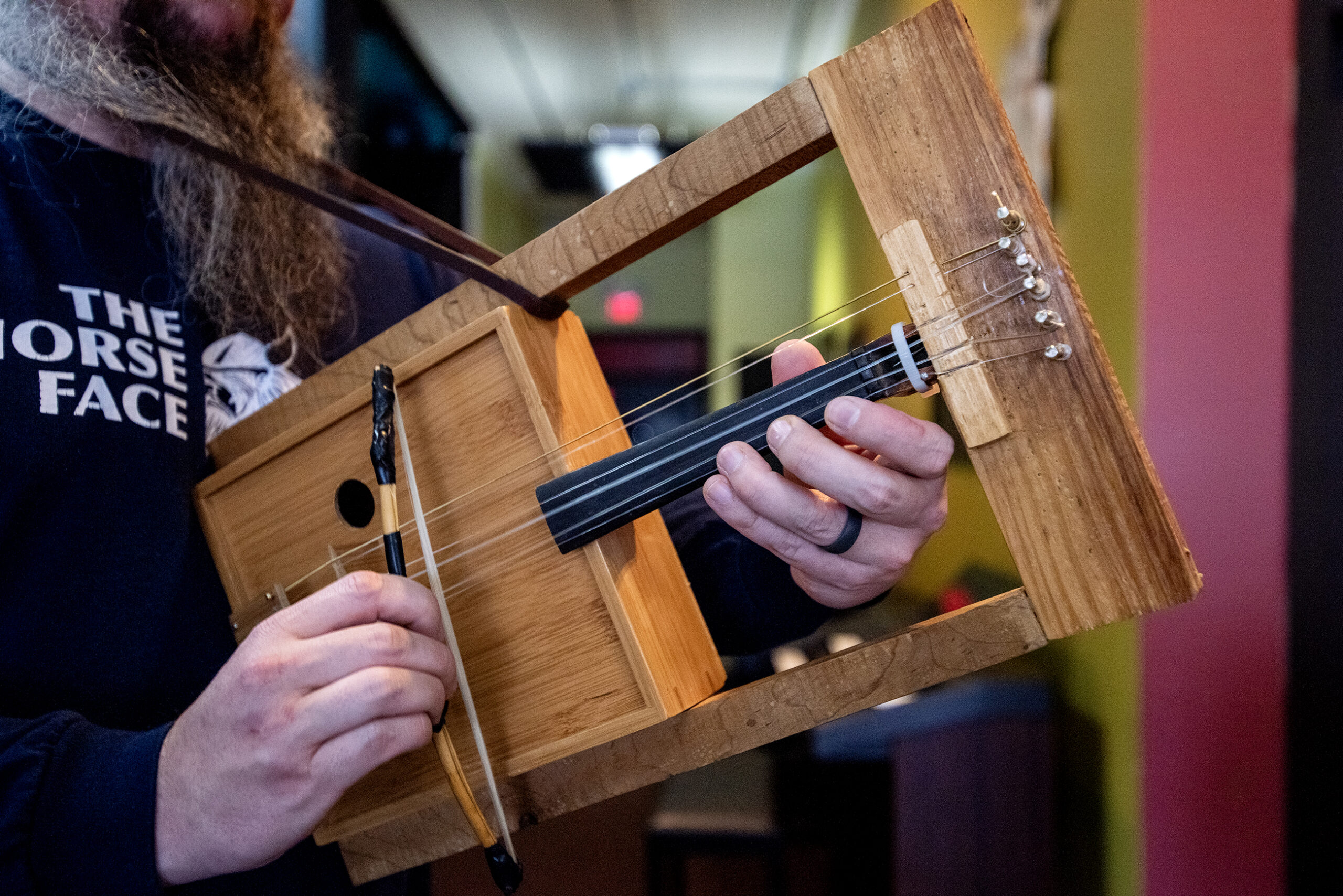
Eric Bestul plays music on a crwth at his music studio Thursday, Jan. 16, 2025, in Iola, Wis. Angela Major/WPR
There’s a name for the type of work Bestul does: experimental archaeology. It is a way of studying the distant past by recreating its conditions and testing hypotheses. For Bestul, the process of playing the instruments researchers believe existed in the Viking era helps to reveal things about what kinds of music they made.
“How do you find out what these instruments sound like and how they play?” he said. “Well, you make them, and you try to recreate some of the sounds.”
For example, it reveals that their music likely included drones – a continuous single note or chord over which a melody is played.
“Almost every instrument that we use, both in the living tradition from the nyckelharpas and the Hardanger fiddles to the stuff that came before it, (such as) Gregorian chants – drones are a steady thing all the way through,” Bestul said. “And then when you play the instruments, it’s like, yeah, man. It totally fits to have this drone and you’re playing melodies over it.”
Here are other excerpts from WPR’s interview with Bestul, edited for length and clarity:
On discovering Viking music
I saw somebody playing a tagelharpa (sometimes called a talharpa) in a video and I was like, “I bet I can make one of those.” And so I made one – it’s basically a rectangular box with a hole in it and a bridge on top of it, and you play it sitting on your legs. (They used) horsetail hair, but I’m using nylon fishing string braided up.
And then it just turned into, well, this is my main area of study now, looking into medieval, pre-medieval, Viking-era music.
On his career in music
I grew up here in Iola. I had been playing guitar since I was 14. When I graduated from high school, I went to school for audio engineering. I lived in Madison, got my degree there in audio engineering and worked in record studios just as the whole studio industry was dying (because) home recording was becoming a thing. Then I worked in music retail for many years.
I had the opportunity to go out on tour with some bands, like Owen Mays and Jimmy Swope, playing country music, which is also a passion of mine. I became a hired-gun guitar player. (Bands would say) “Hey, can you hop in the van and go play for a month or so?” Yep. And I did that for a long time, got to tour the U.S. and a bunch of Europe, which is really cool.
Then, as my son was growing up, I wanted to be home more, so I kind of stumbled into teaching. I started teaching guitar lessons, and I just fell in love with it.
(I bought Lessons from the Art from the original owner), and my closing date was three days after the COVID shutdown in 2020. It was a big old mess, getting all this started up, keeping it open, figuring out how to do online lessons. But we made it through.
On historical accuracy in music
I have always been a huge history nerd. I was the kid who, when they rolled in the TV for documentaries in school, was actually watching it and was super into it.
I work with people who want to be 100 percent accurate (in their music). If there isn’t evidence for it, it doesn’t exist. And we need those people. And I also work with people who are total creatives and just want to have some of these sounds in their music. I really find myself balancing somewhere in the middle.
On Vikings
At the end of the day, Vikings are cool.
